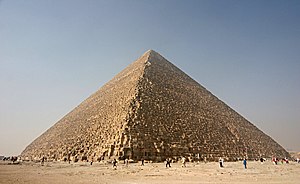WHAT rings a bell when you think about a refuse pile? You likely partner such a sight with reject and an unsavoury smell. So you would scarcely hope to discover anything of significant worth there, considerably less a precious pearl.
However, a century prior to a fortune of sorts was found in simply such a spot—the rubbish. The fortune was, not an exacting jewel, however something different of incredible esteem. What sort of fortune was revealed? For what reason is its disclosure critical to us today?
AN UNEXPECTED FIND
At the turn of the twentieth century, Bernard P. Grenfell and Arthur S. Chase, researchers at the University of Oxford, visited Egypt. There, among the trash piles near the Nile Valley, they found various papyrus parts. Afterward, in 1920, while the two associates were caught up with recording the accumulation, Grenfell procured some extra sections that had been delved up in Egypt. He obtained these for the benefit of The John Rylands Library in Manchester, England. In any case, the two men passed on before the list was done.
Colin H. Roberts, another researcher at Oxford University, finished the undertaking. While he was arranging the pieces, he detected a papyrus scrap estimating 3.5 by 2.4 inches (9 x 6 cm). Surprisingly, the Greek penmanship contained words that were natural to him. On one side were words are taken from John 18:31-33. The opposite side contained pieces of refrains 37 and 38. Roberts understood that he had discovered an invaluable pearl.
Deciding ITS AGE
Roberts presumed that this papyrus scrap was exceptionally old. Be that as it may, how old? To discover, he contrasted the penmanship on it and other dated old original copies—an order called paleography. * By applying this technique, he had the option to allow a surmised age. However, he needed no doubt. So he shot the section, sent duplicates of it to three papyrologists, and requested that they decide its age. What did these specialists finish up?
By examining the style of the content and the strokes, each of the three of the master researchers concurred that the section had been written in the primary portion of the second century C.E.— only a couple of decades after the messenger John's passing! Paleography, in any case, is certifiably not an idiot proof technique for dating original copies, and another researcher trusts that the content could have been composed whenever during the second century. However, this little piece of papyrus was—and still is—the most seasoned existing original copy section of the Christian Greek Scriptures that has ever been found.
WHAT THE RYLANDS FRAGMENT REVEALS
For what reason is this piece of John's Gospel so critical to admirers of the Bible today? For at any rate two reasons. Above all else, the configuration of the part gives us some understanding into how the early Christians esteemed the Scriptures.
In the second century C.E., composed content came in two configurations—the parchment and the codex. Parchments were bits of papyrus or material that were stuck or sewed together to shape one long sheet. This sheet could then be moved up and unrolled at whatever point required. Much of the time, just one side of parchment was utilized for composing.
In any case, the modest piece that Roberts found has penmanship on the two sides. This proposes it originated from a codex instead of a parchment. A codex was produced using sheets of material or papyrus that were sewn together and collapsed in an arrangement looking like a book.
What were the upsides of the codex over the parchment? All things considered, the early Christians were evangelizers. (Matthew 24:14; 28:19, 20) They spread the Bible's message any place they could discover individuals—in homes, in commercial centers, and in the city. (Acts 5:42; 17:17; 20:20) So approaching the Scriptures in a conservative organization was considerably more down to earth.
The codex additionally made it simpler for gatherings and people to make their own duplicates of the Scriptures. Hence, the Gospels were duplicated again and again, and this no uncertainty added to the fast development of Christianity.
A moment of the motivation behind why the Rylands section is imperative to us today is that it uncovers how dependably the first Bible content was transmitted. In spite of the fact that the section contains only a couple of stanzas from John's Gospel, its substance concurs precisely with what we read today in our own duplicates of the Bible. The Rylands piece in this way demonstrates the Bible has not been adjusted regardless of being replicated and recopied after some time.
Obviously, the Rylands section of John's Gospel is nevertheless one bit of proof among a large number of pieces and compositions that affirm the dependable transmission of the first Bible content. In his book The Bible as History, Werner Keller finished up: "These old [manuscripts] are the most persuading answer to all questions with regards to the validity and dependability of the content that we have in our Bibles today."
Genuine, Christians don't put together their confidence with respect to archeological finds. They trust that "all Scripture is roused of God." (2 Timothy 3:16) Nonetheless, how consoling it is when invaluable diamonds from the past affirm what the Bible has said up and down: "The idiom of Jehovah suffers everlastingly"!— 1 Peter 1:25.







